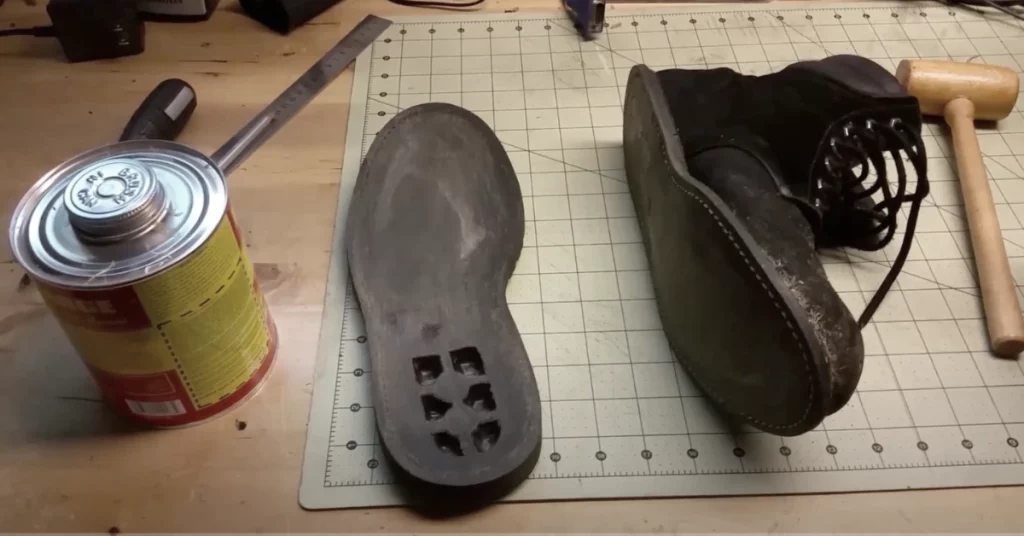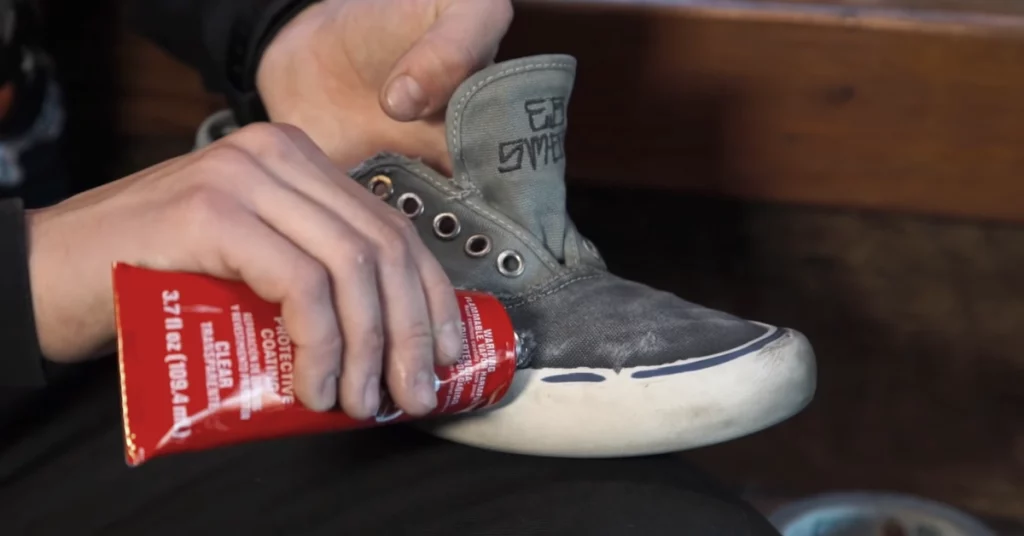Deciding on glue is one of the first things you do when you’re looking to repair your old shoes. Shoe Goo is a household name trusted by many when repairing shoes. Barge Cement can be an alternative to improving your boots or reattaching your soles if they fall apart.
However, even though both are adhesives that you use to repair your shoes, they have some differences. This article will cover Barge Cement vs. Shoe Goo, its features, and which materials they are good on.
Read More: E6000 vs. Shoe Goo
Read More: Shoe Goo vs. Shoe Goo 2
Barge Cement vs. Shoe Goo
Details of Barge Cement
Barge All Purpose Cement glue is made by Barge Adhesives and is a professional strength adhesive. It is available in two variants – the original and the toluene-free variant.
Barge Cement can be used on various materials for shoes, like – Leather, Plastic, or Rubber. Furthermore, Barge Cement is also suitable for more materials like – Vinyl, Wood, Glass, and Polyvinyl Chloride so that you can use it for other DIY purposes.

Barge Cement can be an excellent choice for patching your rubber boots or if you want to reattach the soles of any shoes made with Leather, Rubber, or Vinyl Plastic. One of the best features of Barge Cement is it creates a permanent bond between the materials once fully cured.
Barge Cement is a water-soluble adhesive, and it’s also waterproof when it’s completely cured. Barge Cement is known for its strong bonding capabilities since it’s also used for heavy industrial purposes besides repairing household items.
You must maintain caution while using and applying barge cement since it’s toxic and flammable. The Barge All Purpose Original Cement is available in 4 sizes – Pints, Quarts, Gallon, Five Gallons, and Fifty-five Gallons.
The barge All Purpose Toluene-free variant is available in .75 oz tubes, 2 oz tubes, and in Pints, Quarts, or Gallons.
Read More: Loctite Shoe Glue vs. Shoe Goo
Details of Shoe Goo
Shoe Goo is an adhesive made for repairing shoes that also acts as an excellent sealant by Eclectic Products. Shoe Goo is a household name for repairing shoes and works well with various materials like – Vinyl, Leather, Rubber, and Canvas.
Furthermore, Shoe Goo also works as an excellent sealant, so you can also use it to fill small holes and gaps in your shoes. Shoe Goo is composed of Styrene-butadiene, Toluene, and Solvent naphtha and is known for its superior bonding capabilities since it creates a permanent, robust, long-lasting bond.
Shoe Goo is waterproof once wholly cured so that you can use them for shoes you plan to use during rain or snow. Shoe Goo is a versatile choice for repairing shoes since you can use coats on softer parts of your shoes, like the tip, to strengthen them from damage.
Shoe Goo is suitable for using for Shoes you’ll be using for recreational or casual sports purposes. Shoe Goo comes in clear color and four different tube servings of – 0.18 fl oz, one fl oz, and three fl oz.
Read More: Does Shoe Goo Work?

Read More: Shoe Goo vs. Rubber Cement
Differences Between Barge Cement and Shoe Goo
So now that we’ve looked at what features Shoe Goo and Barge Cement have and what they are used for, let’s look at their differences.
Appropriate Materials to Use On
Barge Cement is an industrial-grade adhesive suitable for various materials like – Leather, Plastic, Rubber, Vinyl, Wood, Glass, and Polyvinyl Chloride. It would work excellent with Shoes made with Rubber or Leather and for reattaching soles.
Shoe Goo is an adhesive used primarily with shoes, so it’s good with various materials. Shoe Goo works well with Leather, Vinyl, Rubber, or Canvas.
Drying Time
Barge Cement has a fast dry time ranging from 10 to 15 minutes. Furthermore, it has an open time of 4 hours so you can safely work.
Shoe Goo takes around 24 to 48 hours to cure fully, so it’s recommended to leave your shoes undisturbed for a day once you’ve applied the glue.
Potential Risk of Hazard
Barge Cement has some toxic materials and is flammable, so you need to take precautions while using it. You’ll need rubber gloves and proper eye protection gear while applying Barge Cement. We also recommend having adequate ventilation while using Barge Cement.
On the other hand, Shoe Goo does not come with any such health hazard and is safe to use.
Read More: Barge Cement vs. Contact Cement
Last Opinion
You can use both Barge Cement and Shoe Goo to repair various components of your shoes. So which one should you be going for in the Barge Cement vs. Shoe Goo debate?
If you need to repair your shoes and use them immediately and do not mind the precautionary steps for using Barge Cement, you can use them to improve your rubber or leather shoes. Barge Cement would also be a great choice to reattach soles.
On the other hand, go for Shoe Goo if you can go without using your shoes for a day or two after you repair them. If you’re looking for sealant for improving small holes or gaps in your boots, Shoe Goo is an excellent choice.

